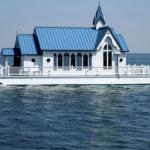 Cement (not the same as concrete). That’s what.
Cement (not the same as concrete). That’s what.
The secret to making sustainable, strong concrete may have been at the bottom the Mediterranean Sea for the past 2,000 years: Researchers believe that the ancient Romans created concrete that is more environmentally friendly and durable than modern cement….
Monteiro and his colleagues may have found an alternative: “sea” concrete used by Romans for harbor installations in the Mediterranean is made with a different concentration of materials than today’s mix of limestone and clay, which allowed it to be baked at a much lower temperature (about 1,650 degrees, compared to 2,640 degrees for modern “Portland” concrete). The result is a strong concrete that is less harmful to the environment.
Engineers have had some success using the byproducts of coal power plants, known as “fly ash” to create a type of “green” concrete, but there is only so much fly ash to go around, Monteiro says. So engineers may soon do as the Romans did and use a mix of volcanic ash and limestone.
“Volcanic ash is available in a good deal of the world, usually there are entire mountains of it following a volcanic eruption,” he says. “The Romans were unbelievably good at using it as a building material.”















